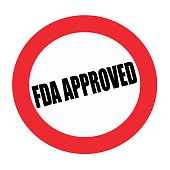Any organization involved in food or pharma manufacturing, processing or packaging needs to follow the guidelines, regulations and laws set down by the FDA. Whether it’s ensuring complete and accurate documentation or following a set schedule for equipment calibration at your facility, there’s really no “wiggle room” when it comes to compliance services!
FDA Compliance and Why It’s Important
The FDA (Food and Drug Administration) is a federal agency that is responsible for:
- The protection of public health, by making sure of the safety, security and efficacy of drugs (veterinary, prescription and pharmaceutical), food products, dietary supplements, vaccines, medical devices, cosmetics, and radiation-emitting products.
- The advancement of public health, by assisting with the speed of new innovations in safety, efficacy and affordability of food, medicine and healthcare products, as well as promoting awareness about how medicine and food are used for better health.
- The regulation of tobacco products (manufacture, marketing and distribution) to safeguard public health and minimize their use by minors.
- The security and improvement of the nation’s food supply and medical products, to fight both natural and deliberate threats to public health.
It’s important to adhere to FDA regulations because they have been developed to make sure that food and pharma products maintain a high quality. In case the required standards of quality management are not being met, the agency can take action against violators, imposing penalties such as fines, product recalls and even imprisonment.
Other than monetary losses, there’s also the bad publicity and loss of reputation to consider. Your profits could be affected for an extended period of time if the public considers your company untrustworthy!
What Are FDA Compliance Policy Guidelines?
The FDA’s compliance policy helps provide an evaluation model for FDA personnel when they’re inspecting food or pharma quality processes.
Neither the public nor the FDA is bound to follow this set of validation programs, but the guidelines are treated as recommendations instead. Alternatives approaches can be used for validation processes and calibrations, as long as you ensure that they fulfil the regulations or statutes that apply to them.
Here’s an overview of some FDA compliance guidelines:
1. CPG Sec.100.100 – All FDA personnel are responsible for reporting any instances of violation (of FDA laws and regulations) or possible hazards that could endanger public health.
2. CPG Sec. 100.200 – Products made with interstate materials or ingredients fall under FDA jurisdiction, and action can be taken even if the finished product is not involved in interstate shipment.
3. CPG Sec.100.250 – Any domestic or international facility involved in manufacturing, processing or packaging human and animal food products must be officially registered with the FDA.
4. CPG Sec. 100.300 – FDA personnel can report or act against non-registered materials or products that are potentially dangerous to public health (communicable disease hazards, contaminated, etc.).
5. CPG Sec. 110.200 – The movement of products in and out of Foreign Trade Zones is treated as interstate commerce, comes under FDA jurisdiction and must meet applicable laws and regulations.
6. CPG Sec. 110.700 – Prohibited materials (like narcotics) of foreign origin may be seized by U.S. Customs, as well as products that are unhygienic, pose a health risk or represent consumer fraud.
7. CPG Sec. 110.800 – Importers may take reasonable samples from detained import goods and send them for examination or analysis, following Customs’ regulations and statutes.
FDA Compliance Program Guidance
Guidance documents for the FDA’s compliance policy are designed to reflect its current thought process, giving review staff and sponsors a “map” for the content, processing, and evaluation of applications. They also act as a set of instructions for designing, producing, manufacturing and testing FDA-regulated products.
While these guidance documents are not enforceable (they are not laws or regulations), they help with maintaining consistency in inspection, regulation and enforcement. For instance:
- This guidance can help you understand practices and procedures for new drugs, so they comply with applicable cGMP (current Good Manufacturing Practice) regulations for finished pharmaceuticals.
- For evaluating OOS (out of specification) or suspect results that fall outside the established qualifications or criteria of acceptance for new drug applications, this document is the perfect guide.
Other guidelines or guidances may also be applicable to your facility or the specific equipment you use, so consult an FDA compliance expert (like a calibration service provider) if you aren’t sure of how to proceed. Calibration labs offering pharmaceutical equipment validation services can often help with FDA compliance training too!









